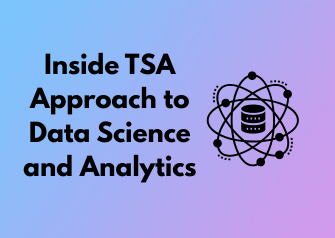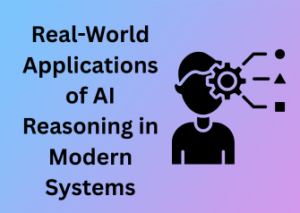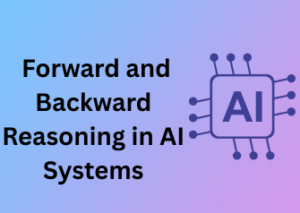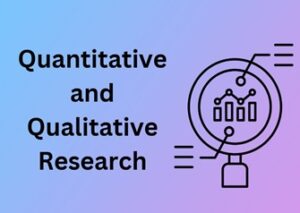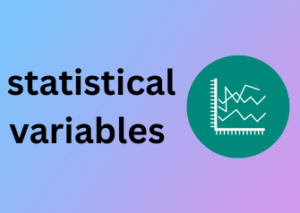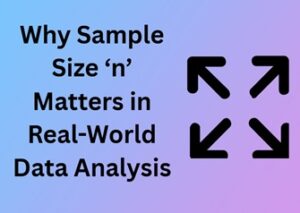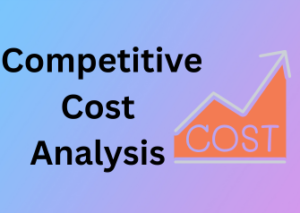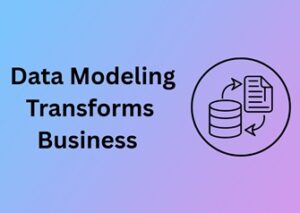When you hear about the Transportation Security Administration (TSA), your mind likely conjures up images of airport checkpoints, luggage scanners, and security agents. While those are undeniably core aspects of TSA’s mission, there’s an entire world operating behind the scenes—one powered by the transformative force of data science and analytics. The TSA’s approach to data goes far beyond security screening; it permeates every nook of its operations, ensuring seamless travel experiences while maintaining top-notch safety.
Let’s be real: orchestrating a functional system for millions of travelers every single day is no small feat. This is where data steps up to the plate. The TSA leverages data to optimize workflows, streamline operations, and manage the logistical challenges inherent in keeping one of the world’s busiest networks running smoothly.
Optimizing Passenger Flow
When you groan at the sight of a long line for security screening, you might take comfort in knowing that the TSA is tirelessly working on reducing wait times while maintaining a secure environment. How? By analyzing passenger volume data, historical travel patterns, and even real-time flight information. The TSA utilizes these insights to better allocate resources—whether that means deploying more agents to busier terminals or optimizing screening processes for maximum efficiency. So, next time the line feels like it’s moving faster than expected, there’s a good chance data had a hand in that!
Smarter Resource Allocation
It’s not just about people—it’s about luggage, too. The TSA handles billions of pieces of baggage every year, each one requiring attention to ensure nothing dangerous, illegal, or prohibited gets onboard. Data allows the TSA to determine peak processing times at various locations across the country, ensuring the right equipment, systems, and personnel are where they need to be. This careful balance keeps airports running smoothly while minimizing potential disruptions.
- Airports with higher traffic: Data highlights risk-prone areas and helps TSA focus extra resources where they’re needed most.
- Atypical travel days: Holidays, severe weather events, and unprecedented travel changes are all modeled using historical data to predict and alleviate bottlenecks.
Mitigating Security Threats Beyond Checkpoints
It’s important to understand that the TSA’s role goes well beyond the security lane. Through advanced analytics, they analyze threat assessment data to identify emerging risks. This includes everything from tracking patterns of suspicious behavior across airports to assessing potential vulnerabilities in transportation systems. Think of it as a proactive, rather than reactive, approach. The secrets to securing travel corridors often lie in predictive data-based intelligence rather than just physical barriers.

From Data to Decisions
At the heart of it all, the TSA uses data to make more informed and effective decisions. Imagine thousands of flights crisscrossing the skies, moving tons of cargo, and shepherding millions of travelers. Data shapes the strategies behind not just logistics but also long-term planning, ensuring that the TSA keeps pace with evolving technologies and threats. Whether it’s enhancing staff training programs or refining airport layouts, every improvement starts with a question—and the answer often lies in data analytics.
A Closer Look at TSA’s Data Tools and Platforms
When you think about the Transportation Security Administration (TSA), chances are the first image that comes to mind is a busy airport checkpoint. However, behind the scenes, some of the agency’s most significant advancements are driven by powerful data tools and platforms. Let’s pull back the curtain a little and take a closer look at how TSA uses cutting-edge technologies to stay ahead in ensuring safety and efficiency.
Data Tools: Building Blocks of Smarter Security
In today’s fast-paced environment, manual processes just don’t cut it anymore. The TSA relies on a host of advanced tools designed to collect, process, and utilize massive amounts of data in innovative ways. Here’s a quick breakdown of some key data tools they employ:
- Machine Learning Algorithms: These models specialize in identifying suspicious patterns ranging from travel behaviors to baggage data. They adapt and improve over time, helping to refine TSA operations continuously.
- Integrated Risk Assessment Systems: These systems analyze passenger demographics and travel histories to assess potential risks in real-time—allowing screeners to prioritize resources in high-risk situations.
- Secure Baggage Screening Platforms: Thanks to AI-powered imaging technology, TSA can detect prohibited items in checked luggage more accurately and efficiently than ever.
- Anomaly Detection Software: This tool flags outliers in passenger or shipment data, alerting TSA personnel to conduct further investigation where necessary.
These data tools are like having a silent partner working 24/7 to optimize processes and enhance decision-making. They allow TSA to manage the astronomical volume of passengers and baggage every day while keeping security priorities intact.
Powerful Platforms Bringing Insights Together
The tools are only part of the equation. The TSA also leverages enterprise platforms that connect and unify its vast streams of data, creating a clear operational picture. Here are a couple of the core platforms they use:
- National Targeting Center (NTC): Acting as the central hub for TSA intelligence, this platform uses data from around the world to monitor risks and provide actionable insights to agents on the ground.
- Data Sharing Portals: These serve as bridges between TSA and other agencies like Customs and Border Protection (CBP), allowing smooth communication and faster cross-agency responses to threats.
By consolidating data into these platforms, the TSA can analyze trends, dig into root causes of disruptions, and even collaborate seamlessly with other organizations—all without missing a beat.
Empowering the Human Element
Critical to the success of these tools and platforms are the people who use them. TSA continuously trains its workforce to interpret and act on data-driven insights. They roll out user-friendly dashboards and interfaces, ensuring staff can easily access critical information without requiring a computer science degree.
This combination of state-of-the-art technologies and empowered personnel creates a powerful, coordinated ecosystem designed to protect travelers and maintain operational excellence.
Real-Time Analysis: Keeping Safety a Step Ahead
Ever wondered how airports manage to stay one step ahead in ensuring passenger safety despite the dynamic nature of global travel? The answer can be summed up with two words: real-time analysis. For the Transportation Security Administration (TSA), leveraging data instantly and efficiently is the heart of its mission to protect passengers and streamline operations. Let’s dive into how they do it and why it’s such a game-changer.
What Is Real-Time Analysis?
Imagine being able to identify risks, adapt to changing situations, and make critical decisions—all in the blink of an eye. Real-time analysis empowers the TSA to ingest vast amounts of live data, analyze it on the spot, and take swift, informed actions. Whether it’s monitoring equipment performance, assessing security risks, or managing passenger flow, the ability to process data as it happens ensures the agency can respond effectively without delay.
How Does It Work?
At the heart of real-time analysis lies a combination of advanced technology, skilled analysts, and a robust infrastructure. Here’s how it comes together step by step:
- Data Collection: A variety of sources feed critical information to the TSA, from security screening machines and ticketing systems to surveillance cameras and on-ground sensors.
- Processing and Analysis: Algorithms sift through this constant stream of data, highlighting patterns, anomalies, or potential security threats on the fly.
- Actionable Alerts: Once identified, flagged issues or insights are relayed to relevant teams for immediate response. For instance, if a piece of equipment shows signs of failure, maintenance teams are notified to intervene proactively, ensuring minimal disruption.
Applications in Daily Airport Operations
The TSA’s use of real-time analysis isn’t just theoretical—it has real, tangible impacts on the day-to-day experience of travelers and staff. Here are a few fascinating examples:
- Preventing bottlenecks: By tracking passenger flow in security lines, the TSA can dynamically allocate resources and re-route travelers to underused checkpoints to prevent long queues and delays.
- Flagging risky baggage: Smart screening systems can instantly detect anomalies in luggage scans, allowing agents to address potential threats without slowing down the entire screening process.
- Responding to emerging threats: If an immediate risk is flagged due to intelligence reports or sensor systems, the TSA can implement temporary measures like lockdowns or increased security in high-priority areas without missing a beat.
Why Real-Time Analysis is Critical
Airports are among the most complex ecosystems in modern society, with thousands of moving parts, from passengers to planes to equipment. Real-time analysis helps the TSA keep this intricate network functioning smoothly and safely. Even more importantly, it allows the agency to move from a reactive posture to a proactive one, anticipating issues before they escalate.
Data Ethics and Privacy: TSA’s Commitment to Compliance
When you think of the TSA, you probably imagine long security lines, luggage scanners, and those friendly reminders to “remove your liquids and laptops.” What might not cross your mind, though, is how data plays a vital role in ensuring safe travel. But here’s the thing—TSA doesn’t just collect and analyze data; they’re laser-focused on doing it ethically and with privacy as a top priority. Let’s dive into how the TSA balances the delicate dance between data power and privacy protection.
Why Privacy Matters in TSA Operations
The TSA operates in a unique space where its mission is deeply tied to public safety. To stay ahead of evolving threats, the agency uses cutting-edge technology and relies on heaps of data. But here’s the catch: most of this data involves YOU—the traveler. From biometric scans at security checkpoints to reservation data shared by airlines, TSA manages highly sensitive personal information. That’s why safeguarding traveler privacy isn’t just a legal obligation—it’s a moral one too.
The TSA follows strict protocols to comply with regulations like the Privacy Act of 1974 and the Transparency and Fairness measures outlined in the DHS Privacy Policy Framework. These guidelines aren’t just words on a page—they dictate how all that information is used, who gets access to it, and how long it’s retained.
Built-In Ethics: How TSA Prioritizes Responsible Data Use
What separates responsible organizations from reckless ones is how they apply their ethics when working with data. For the TSA, ethical data use starts at the very beginning of any project. Teams undergo mandatory training on privacy and ethics in data science, ensuring that every analytic and algorithm respects the boundaries of consent, necessity, and proportionality.
Additionally, the TSA actively involves a team of privacy experts and advisors in the design and deployment of its technologies. Whether it’s a new biometric verification system or improved screening algorithms, these specialists review how data will flow through the system, ensuring compliance with both federal mandates and global privacy standards like the European Union’s GDPR for international travelers.
Transparency Builds Trust
Transparency is TSA’s secret sauce in this equation. Whenever new data initiatives are launched, the agency works to inform the public about what’s being collected, why, and what measures are in place to protect it.
For example, when biometric screening systems were introduced, TSA made publicly available privacy impact assessments that explained the technology—an intentional move to reduce public skepticism. This willingness to communicate openly is key to maintaining trust in a world where data breaches and misuse scandals dominate headlines.
Keeping Data Safe: The TSA Playbook
But what good is ethical collection if data isn’t secure? TSA employs state-of-the-art encryption, access control, and cyber defenses to protect sensitive information from bad actors. Systems undergo regular audits to identify vulnerabilities, and TSA works closely with cybersecurity teams to address any potential risks proactively.
Moreover, TSA uses “data minimization” as a guiding principle. This essentially means they only collect and keep the data that’s absolutely necessary. Once a piece of information has served its purpose, it’s permanently deleted to prevent misuse.
Predictive Insights: Anticipating Security Challenges
Have you ever wondered how the Transportation Security Administration (TSA) stays a step ahead of potential security threats? It’s not just about sharp eyes at the checkpoint or cutting-edge scanners—there’s a whole world of predictive insights working behind the scenes. At its core, TSA’s approach to anticipating security challenges revolves around data science, deep analytics, and a proactive mindset.
Let’s dive into the fascinating world of predictive technology and how it equips TSA to tackle potential challenges before they even arise.
What Are Predictive Insights?
In the simplest terms, predictive insights involve utilizing existing data to foresee future outcomes. Think of it as putting together a puzzle—except, instead of a picture of a cozy landscape, the puzzle helps predict the likelihood of security risks. TSA harnesses this power to anticipate threats, identify patterns, and strengthen overall security protocols.
For instance, sophisticated algorithms and machine learning models analyze vast amounts of information—from traveler behavior patterns to global threat intelligence. By doing so, TSA can identify anomalies or risks early and allocate resources accordingly. The result? A safer, more seamless travel experience for passengers.
How TSA Turns Information Into Action
Okay, so TSA collects a lot of data—but how do they actually use it to make airports secure? Here’s a step-by-step breakdown:
- Data Collection: TSA continuously gathers information from a wide range of sources. These may include flight data, travel patterns, and even input from international security partners.
- Analysis: Using advanced technologies like artificial intelligence and machine learning, TSA evaluates this data to find meaningful trends or unusual activity. This is where predictive tools truly shine.
- Forecasting Scenarios: By examining past behaviors and current global developments, TSA builds models that forecast potential challenges—like increased risk during major holidays or high-profile events like sports championships.
- Taking Proactive Measures: With predictions in hand, TSA adjusts screening protocols, deploys additional resources, or upgrades physical security at vulnerable junctures—all before an issue can develop.
It’s this careful blend of technology and strategy that turns TSA’s data into actionable insights.
A Real-World Example of Predictive Security
Let’s turn theory into practice with a quick real-world scenario. Picture this: a significant international event is happening, and airports worldwide are experiencing a surge in passengers. TSA quickly recognizes an uptick in travelers flying to specific countries. Using predictive insights, they determine these routes might be more susceptible to security risks due to increased traffic.
To counteract this, TSA boosts staffing at key checkpoints, enhances scrutiny for select routes, and works with global security teams to ensure everyone is on the same page. Travelers may never even realize what’s happening behind the scenes—which is precisely the goal!
Staff Empowerment Through Accessible Data Solutions
When you think about the TSA (Transportation Security Administration), your mind probably leaps to those dynamic officers at the airport, diligently ensuring our skies stay safe. But what doesn’t always get the spotlight is how those very staff members are being empowered by one of the most underrated heroes of modern operations: data.
In today’s fast-paced world, having data is one thing—knowing how to use it effectively is another. At TSA, it’s not just about gathering information or having high-tech platforms. It’s about making sure their teams on the ground can easily access and leverage those insights without needing a PhD in computer science. That accessibility is what’s really changing the game.
Why Accessible Data Matters
Let’s face it: even the best tools are useless if they’re clunky, overwhelming, or only understandable by a small handful of specialists. For TSA officers and staff, who work in high-pressure environments, time matters. They need tools that don’t just provide data but present it in a way that’s clear, concise, and actionable. The easier it is for officers to interpret and apply those insights, the faster they can act. And when it comes to security, every second counts!
Breaking Down Barriers to Data
One of the ways the TSA ensures its workforce can easily harness data is through intuitive dashboards and streamlined interfaces. Imagine using a tool that feels as simple as scrolling through your favorite app, but instead of likes and emojis, you’re getting critical, real-time insights about passenger flows, emerging risks, or operational bottlenecks. Sounds pretty handy, right?
- Customized Training: TSA invests in training programs geared towards making data literacy a core skill, even for non-technical personnel. The focus is on practical application—teaching staff what they need to know and why it matters for their day-to-day work.
- Role-Specific Insights: Not everyone needs to see the same data. TSA tailors their solutions to deliver job-relevant information based on a staff member’s role, ensuring they’re not overwhelmed by unnecessary details.
- Mobile Integration: With tools becoming more mobile-friendly, officers can access and report data on the go, whether they’re curbside, at screening checkpoints, or supervising from a distance.
Empowerment Through Confidence
When TSA staff can trust the data they’re using and know how to act on it, their confidence soars. This isn’t just about making better decisions—it’s about creating a workforce that feels supported, valued, and engaged. And when staff feel empowered, they’re better equipped to handle the challenges of their roles with composure and precision.
Collaboration Across Borders: How TSA Shares Intelligence
In today’s interconnected world, no nation stands alone in ensuring aviation security. Security threats know no borders, and that’s where global collaboration becomes pivotal. The Transportation Security Administration (TSA) has taken significant strides in sharing intelligence and building partnerships beyond U.S. boundaries to protect travelers and global aviation systems alike. Let’s take a closer look at how this cooperation works and why it’s so important.
The Power of Global Partnerships
When it comes to securing international travel, relationships matter. The TSA actively collaborates with security agencies, airports, and airlines worldwide to exchange vital intelligence. Whether it’s analyzing evolving threat trends or identifying suspicious patterns, having access to a global network of data allows the TSA to keep ahead of potential vulnerabilities.
One of the standout initiatives is the TSA’s partnership with the International Civil Aviation Organization (ICAO). By working together to set global standards for aviation security, the TSA ensures that its practices align with international best practices. These shared efforts mean that all parties involved are on the same page when it comes to safety, minimizing risks and improving the traveler experience worldwide.
How Does TSA Share Intelligence?
Sharing intelligence is not as simple as sending over a report or a quick email. It involves meticulous planning, secure technology, and trust. Here’s how TSA’s intelligence-sharing process works:
- Collaborative Data Exchanges: The TSA exchanges actionable intelligence with partner agencies in real time. For instance, if there is a new security concern, that information can be distributed globally within hours to prepare international parties for potential risks.
- Joint Training Exercises: TSA collaborates with foreign counterparts to conduct security training programs and simulations. These exercises strengthen skills in detecting and responding to threats while building essential rapport.
- Use of Secure Technologies: Given the sensitivity of the information shared, the TSA leverages cutting-edge, encrypted communication platforms to ensure data security. Protecting the information they share is as important as the intelligence itself.
Success Stories From Cross-Border Collaboration
Multiple success stories highlight the importance of international partnerships. For instance, TSA’s collaboration with European aviation authorities has helped refine pre-clearance programs, streamlining passenger security screening for transatlantic flights. Programs such as Preclearance not only improve security but also cut down on airport congestion, making air travel less stressful for passengers.
Another impactful effort is the shared screening technology initiative. TSA has worked with governments worldwide to provide or enhance screening tools and training. This ensures consistency in detecting threats across different airports, creating a universally elevated standard of security.
What Does This Mean for Travelers?
If you’ve ever flown internationally, you’ve benefited from TSA’s global partnerships, even if you weren’t aware of it. These collaborations mean that security systems across the world strive to maintain high standards, reducing the likelihood of delays, inconsistencies, or security oversights. What’s more, this teamwork ensures that no matter where your journey begins or ends, there’s a seamless commitment to keeping you safe.

